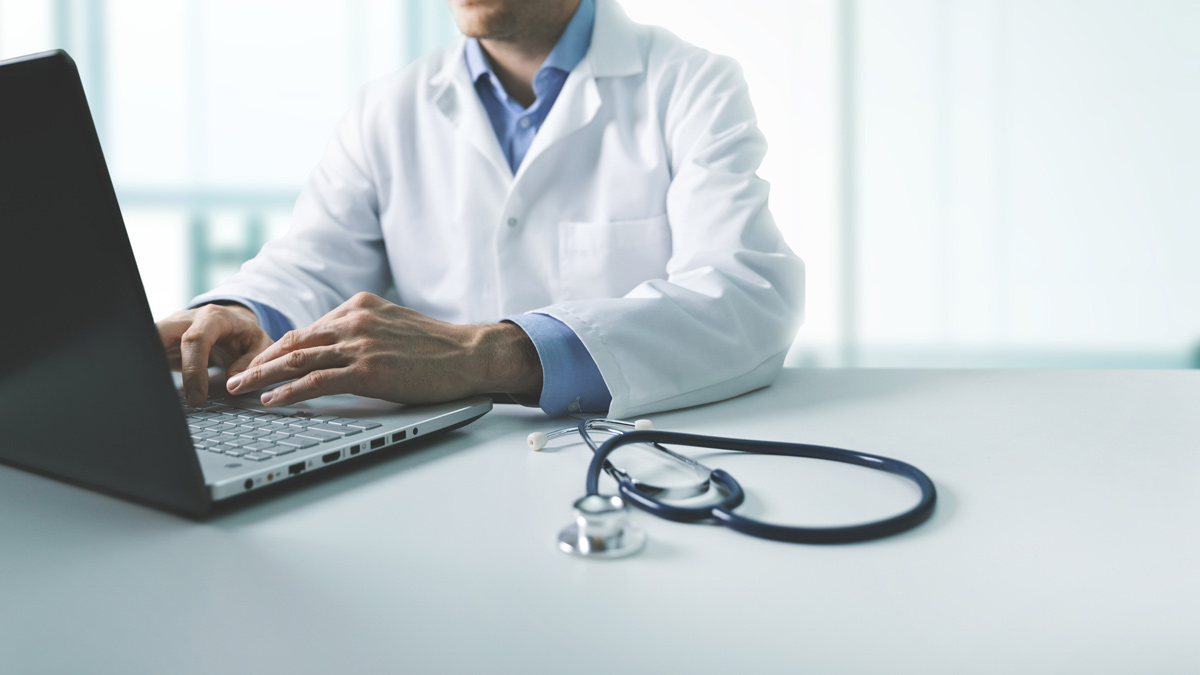How necessity is driving the ‘inevitable transformation’ of medical education

From virtual conferences to CPD webinars, medical education moved online when COVID-19 hit. But is this new way of learning here to stay?
In recent months, necessity has driven the acceleration of digital transformation across healthcare, and medical education is no exception.
Faced with the overriding need to ensure practitioners have the knowledge and training to provide quality care in a socially distant world, providers in their droves have turned to the e-learning model.
Jamie Fitch, co-founder and CEO of OnlineMedEd, said users of his company’s platform increased three-fold when medical students in the US were pulled from care settings at the start of the pandemic.
“There wasn’t enough personal protective equipment, so we had to pull them out. A student does not contribute as much as a registered nurse, for example, so they were at the bottom of the priority list,” he says.
“It would have been disastrous if we had stopped training people. There could have been a whole year in which we didn’t produce a new cohort of healthcare providers.”
More than 15,000 pharmacists and about 30,000 physicians alone graduate every year in the US, he explains.
“If we had suddenly lost hundreds of thousands of healthcare providers and had no one to replace people who are retiring, we would be in trouble.
“Our infrastructure is already weak, it has been laid bare by what has been going on, so I just don’t know what would have happened. If we had pushed these people through to graduation anyway, after losing two or three months of training, they wouldn’t be as prepared as they should be for the roles.”
Catch-up learning
According to Fitch, students had largely already made the switch to online learning, and med ed providers across all settings are now “catching up” with this reality.
“School had already gone online pre-COVID. You would go to a college undergrad campus and see the rooms were only a third full because students were watching online and getting the PowerPoints afterwards.
“This has already happened in the medical space for pharmacy and MD, because early on, when you're learning about the body, biochemistry, how DNA replicates – the basics – it’s not as experiential.
“You're just trying to cram as much information as you can so that when you get to clinical practice, you have the knowledge to start building on. That doesn’t need to be done in person.”
Currently, necessity is driving innovation and the sector is embracing all the tools and technologies at its fingertips to ensure healthcare professionals have all the skills they need.
“The experiential learning has been a bit tougher, but there are resources that you can turn to.
“You can use augmented reality and virtual reality to provide simulations of patients talking about their symptoms, and interactive software that allows you to choose a path, start making decisions and see how those decisions impact outcomes.
“It’s not a perfect match for learning in person, but it’s a nice proxy.”
Inevitable transformation
An article in the Journal of American Medicine in February, before the pandemic became truly global, described this re-imagining of medical education as “inevitable” – it can be more effective and more efficient.
“Why would you have hundreds of thousands of people around the world teaching pharmacy when there are probably one or two who can do it significantly better than the rest? Why would you have a top cardiothoracic surgeon teaching the basic anatomy of the heart? Is that the best use of their time?
“It’s about taking that master class model and moving it into healthcare,” says Fitch, adding that the digital model allowed for the standardisation of resources.
“If you can eliminate the variability between sites, it can only be a good thing.”
Future models
Training and CPD providers have embraced the webinar model with gusto, and medical associations are busy reconfiguring conference plans to take the events online.
Fitch isn’t surprised. “We’ve been saying all along that these are the tools of the future, but institutions would say they are a nice-to-have.
“Now everyone needs these tools, they have made that mental shift and understand the importance of them.”
When done right, virtual bedside training can be just as effective as seeing patients face-to-face, and medical knowledge can be maintained online as well as it can in crowded conference halls.
But there are limitations and the digital realm can’t provide everything. It means the sector will probably adopt a hybrid model in a future, post-COVID world.
“Online medical education is good for medical knowledge, and it can help with some of the active learning building, but, ultimately, you still need to see actual patients and you still need exercises that are led by professionals,” says Fitch.
“We are never going to replace them, and we wouldn’t want to.”











